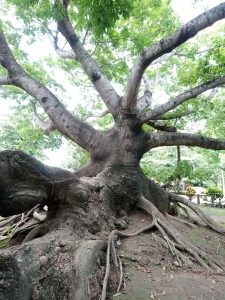Veracruz, Mexico, Jun 27 (EFE).- La Antigua, a city in the Mexican Gulf state of Veracruz, is home to a 500-year-old tree that, as tradition has it, is the site where Spanish conquistador Hernan Cortes tied up his ships before setting off to conquer the Aztecs.

With branches stretching out more than 20 meters (65.6 feet) and thick roots deeply embedded in Mexican soil, the kapok, a tree considered sacred among the region’s Meso-American cultures, is also the subject of one of the most widely believed myths.
It is said that Spanish troops tied their ships to a tree on the shores of the Huitzilapan River before setting out on their campaign against the Aztecs.
A thick iron chain wrapped around the tree is viewed as irrefutable proof that Cortes indeed secured his 11 vessels, which arrived from Cuba carrying some 518 foot soldiers, 110 sailors, 16 horsemen, 32 crossbowmen, 13 musketeers, 10 cannon and four falconets, to this tree.
“Look, Hernan Cortes himself tied his ships to this very place. There is the chain,” Jose Martinez, a local man proud of having been born in the so-called entryway of the Spaniards into the New World, told EFE.
Historians, however, disagree, since historical research, as well as an assortment of documents, tell a different story, stating that the vessels were simply too large to fit in the river, which flows into the Gulf of Mexico.
“(Cortes) did not tie (his ships) to that tree,” Omar Ruiz Gordillo, an anthropologist and historian with the National Anthropology and History Institute (INAH) and one of the country’s foremost authorities on the Spanish conquest of Mexico, said. “His ships simply did not fit in the river.”
The author of 17 books on anthropology and history contends that Cortes actually docked in the Gulf sites of San Juan de Ulua and La Villa Rica, both of which are quite far from La Antigua.
